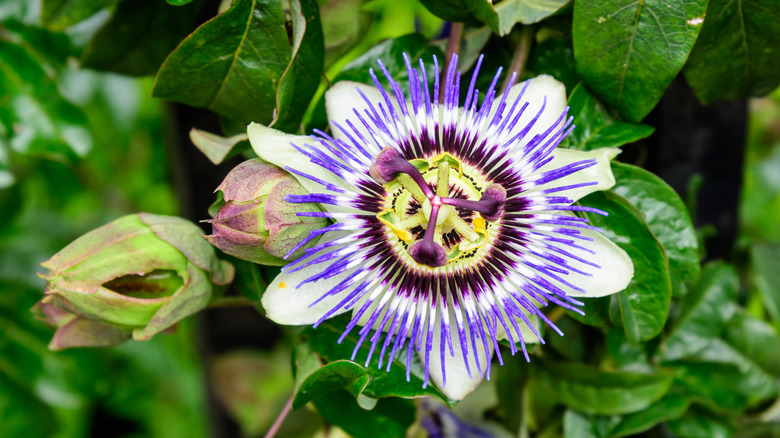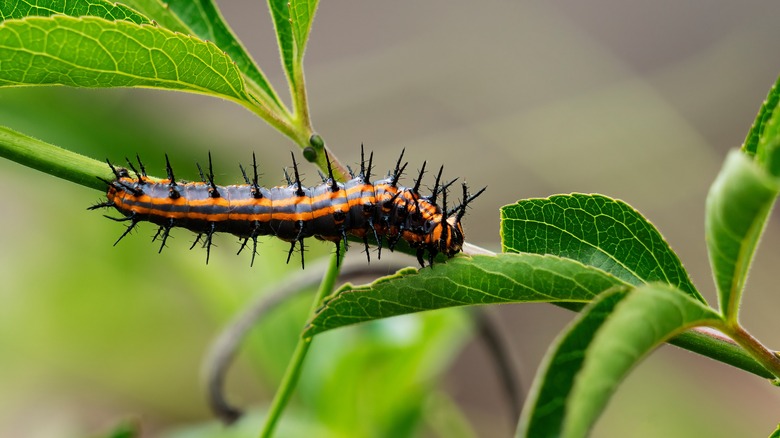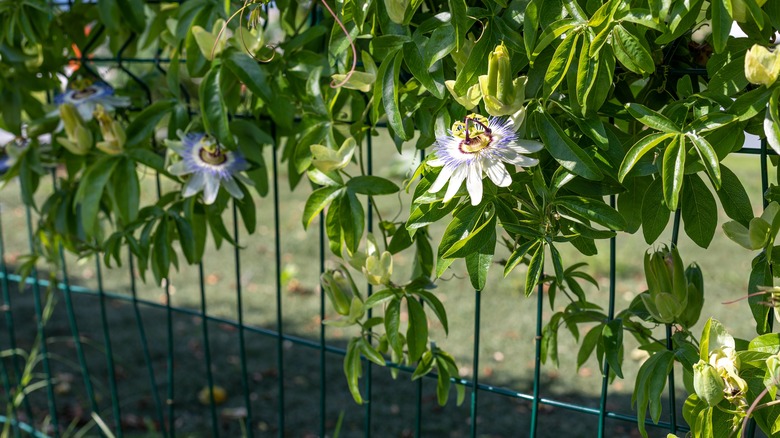Common Issues To Know About Before Growing Passionflower Vine In Your Garden
Passionflowers (Passiflora spp.) are a group of over 550 species of plants belonging to the Passifloraceae family. Most are vines or lianas; however, some are shrubs or trees. Native to Central and South America and Southeast Asia, some passionflowers produce edible fruits while others are grown primarily for their vining foliage and intricate, striking flowers. While passionflowers will reward you with colorful blooms that will attract hummingbirds and butterflies, these fast-growing perennials may be susceptible to various pests and diseases. Regularly inspecting your plants, recognizing symptoms, and ensuring their growing needs are met are the best ways to prevent these issues.
Passionflower species include bluecrown passionflower (P. caerulea), purple passionflower (P. incarta), and passionfruit vine (P. edulis), which produces the famous edible fruit. Passionflower leaves are deep green and can vary widely in shape, from ovate to deeply lobed. The flowers are a complex arrangement of radial petals with a central crown of filaments, ranging in color from purple and white to blue, red, and yellow.
Common pests and diseases for passionflower vines
When grown outdoors, passionflowers can be susceptible to cucumber mosaic virus. This virus causes yellow mottling all over the leaves with less intensity on the growing tips. CMV is primarily transmitted through aphids — remove these pests using a strong jet of water, soapy water spray, or insecticides as a last resort. Weeds such as chickweed and groundsel can also harbor CMV, so get rid of weeds from the planting site. Fusarium wilt (Fusarium oxysporum) is a fungal disease that can affect passionflowers, causing pale foliage, dropping leaves, and wilting. Avoid planting passionflowers in an area previously affected by fusarium wilt in the last four years, or choose a resistant passionflower such as P. cincinnata.
Caterpillars can cause damage to your passionflower vines, eating through the leaves and stems. Species such as the gulf fritillary caterpillar rely on passionflowers as their host — the best way to control small populations is to remove any by hand. Spider mites may also be a problem in greenhouse cultivation. You can identify these by a delicate silk web visible across the foliage and flower buds. Regularly inspect your passionflower vines for signs of infestation, and use a strong spray of lukewarm water to wash them away. Horticultural oil and miticides will also control spider mite populations. To avoid the spread of pests and diseases, use sound gardening practices such as cleaning garden tools, regular plant inspections, and burning or hot composting infected material.
Passionflower vine care
Passionflowers are native to subtropical and tropical regions, but some species can be grown in cooler climates. P. caerulea can be grown in zones 6a through 10b, while P. incarta is suitable in zones 7b through 11. For P. edulis, hardiness zones of 9b and above are suggested, while the hardiest passionflower vine, P. lutea, can tolerate down to zone 5a. Note that passionflower vines are deciduous in cooler climates, dropping their foliage over cold winters. In warm climates, passionflowers are evergreen, keeping their leaves all year round.
To successfully grow passionflowers, choose a sheltered position in full to partial sun. These vining plants use axillary tendrils to climb, so consider a trellis, arbor, or garden fence as a support structure — they can make striking focal points in your garden. Passionflowers are vigorous growers, so heavy pruning may be necessary to avoid overgrowth and to keep tidy. Prune once a year in the spring and cut back the year's growth by up to a half if needed. Grow your passionflower vines in well-draining soil and water outdoor plants weekly during dry weather to maintain moisture. For container passionflowers, water when the top of the soil is dry.


